Transform legacy industries, invent & scale new ones
Modeling and simulation capabilities today are insufficient for understanding complex systems, let alone inventing, validating, de-risking, optimizing, and scaling advanced digital-physical technologies. Engineers & scientists are constrained by antiquated tools that impose outdated workflows: manual, subjective, siloed computational engineering produces industrial machines and mission-critical tech that are guaranteed suboptimal, unreliable, & stagnant. Enter Pasteur4D...
Enabling renewable energy options at scale
What if Mechanical & Nuclear Engineers could optimize design and downstream objectives simultaneously, with full-fidelity results in minutes-to-hours not weeks-or-months?
With P4D, Nuclear small modular reactor (SMR) roadmaps will see immediate and sustained value at design and prototype phases: each independent full-physics subsystem simulation runtime can be cut from upwards 24 hours to approx 30 minutes or less, so you can run 1000s more scenarios, generating rich distributions of performance & safety goals; and big-picture transformations when end-to-end SMR engineering roadmaps slash from 20-30 months to sub-15 with state-of-art AI-embedded digital engineering.
"0 to 1" energy transition wins for Pasteur partners:
- concentrated solar power
- offshore wind
- datacenters & energy storage (see below)
- fission & fusion
Essential inventions: joint multiphysics & spacetime models
True precision manufacturing;
AI tunes your unique pipelines
What if Manufacturing and Aerospace Engineers could adaptively optimize design models and materials specs by plugging-in downstream data, and running real-time?
With P4D, Additive Manufactuing (AM) suppliers and users:
- auto-tune designs for dozens of AM methods
- simultaneously optimize digital CAD models and physical AM tooling options
- efficiently adapt models for inconsistent materials in varying, environments
- improve prototyping ROI with downstream data
- quantify uncertainties & adjust parameters in real-time from AM machine to machine
Previews: heat exchanger AM & nuclear energy SoS –Prototyping and production inefficiencies like AM surface noise are automatically resolved by P4D's workflows for inverse engineering.
Industrial controls transformed;
self-improving cause-effect twins
What if OT, ICS, SCADA, and Forward-Deploy Engineers could continuously update existing industrial controls & process models with domain knowledge + operational expertise + new data?
With P4D, Materials and Chemical processing machines that are outdated or "brownfield" can get AI updates via software ("over-the-air" like Teslas). Customers aim to deploy hundreds of What-if Engine instances generically for distinct machine types across varying sectors, diverse data & sensors, and dynamic environments:
- legacy simulators auto-transformed into AI-driven upgrades ICS downtime for digital twin updates cut from days/weeks to minutes/hours.
- courses-of-action optimized for user-specified objectives The amount of operations errors can be cut in order of magnitudes
- untangled ICS cascades reveal true causes & right actions Industrial process and network reliability you can measure and budget: ML-simulated downtime scenarios reveal possible futures and proactive, risk-mitigating actions
- seamlessly encoded human experts' hands-on knowledge Frictionless UI/UX: users always with zero ML skills, and always satisfied with transparent, trusted cause-effect reasoning.
Industrial machines & processes no longer under-performing nor at-risk because of faulty, hand-coded "digital twin" models and vague, subjective control-ops. Contact us for datasheets and demos.
From CERN physics
to JPL spaceflight...
What if Simulation Devs and Research Software Engineers (RSE) could transform legacy software and bespoke modeling and simulation (M&S) systems into data-driven, ML-accelerated simulators?
With P4D, physics solvers & numerical models run through P4D transformations to become data-driven ML emulators, which are accurate while being magnitudes faster to execute (on the same hardware!).
Essential inventions: multiphysics data generators with inverse Physics-AI agents
Multiphysics AI adaptively optimizes across domains, dimensions, & teams
High consequence design and ops decisions around thermal management in data centers are difficult to quantify in the context of long term economic value and reliability. The simulation expertise responsible for detailed cooling models of server rooms work in isolation from teams focused on hourly compute scheduling and electricity market engagement. Pasteur4D eliminates technical silos, orchestrates interdisciplinary insights from limited expert knowledge and sparse data, and creates end-to-end differentiable workflows that co-optimize computational modules from different teams and mixed specialties —workflows which live on to deploy as executable simulators, running real-time through data-center lifecycles with continuous models adapting to new knowledge and evolving environments.
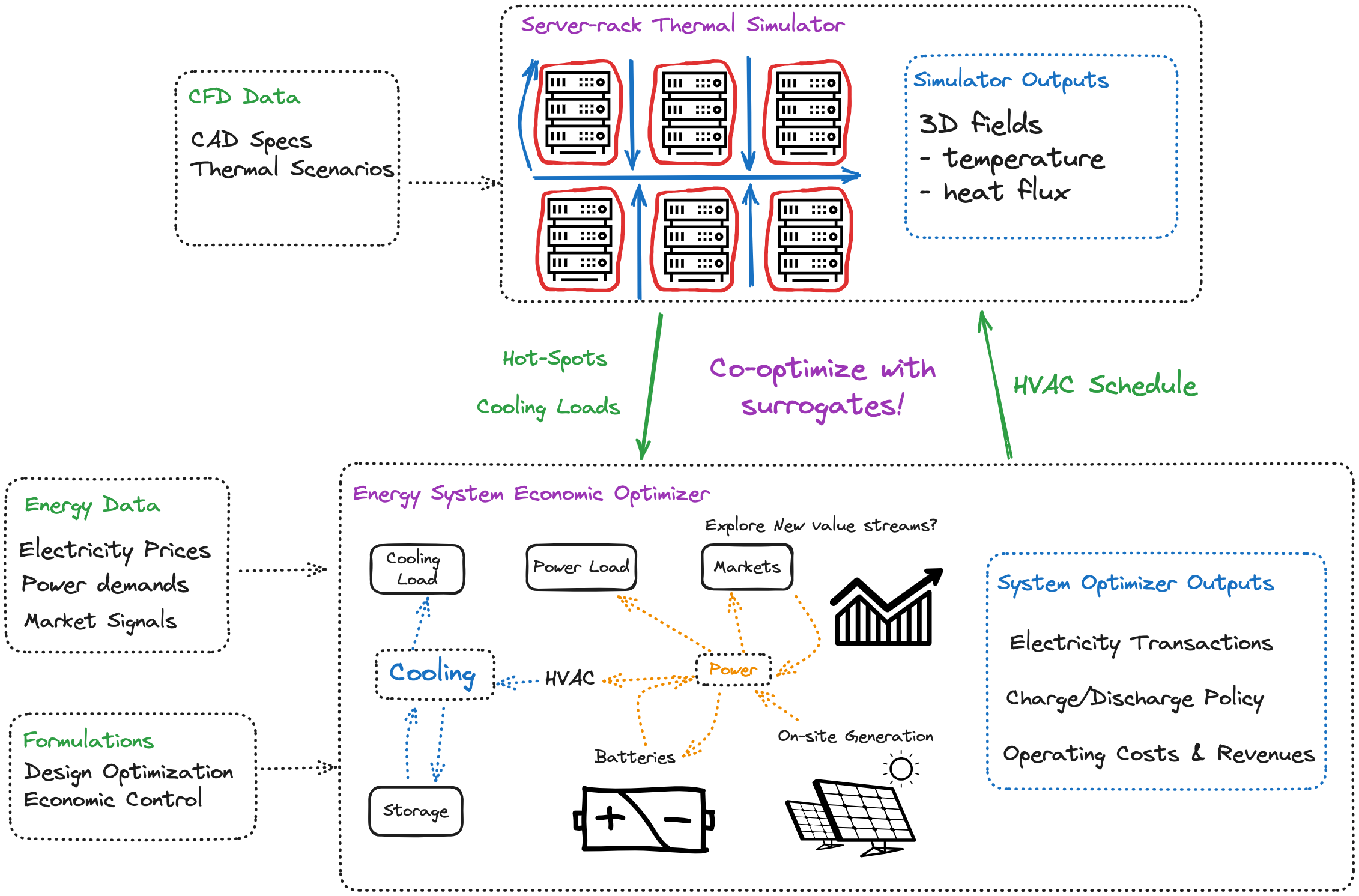
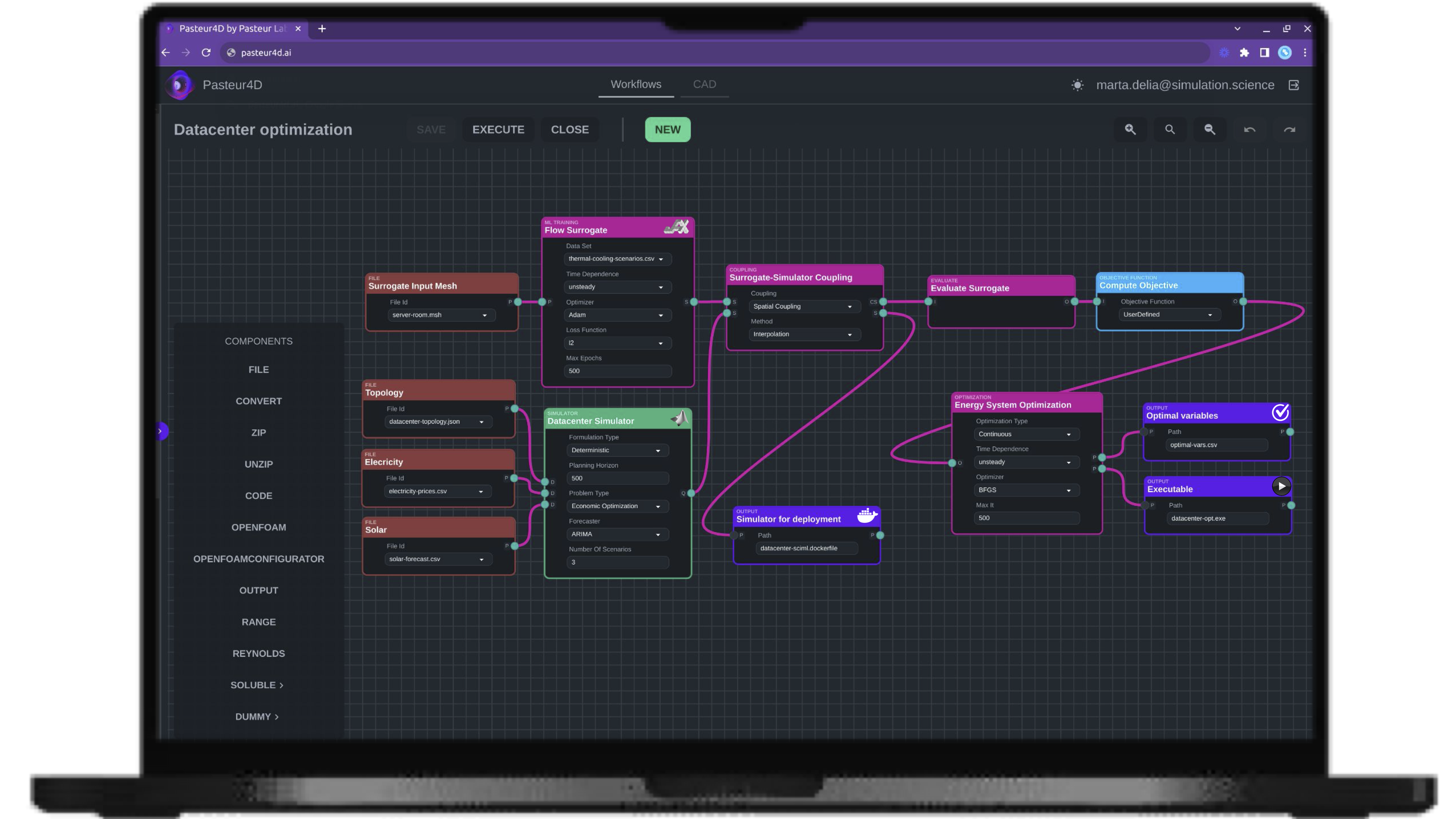
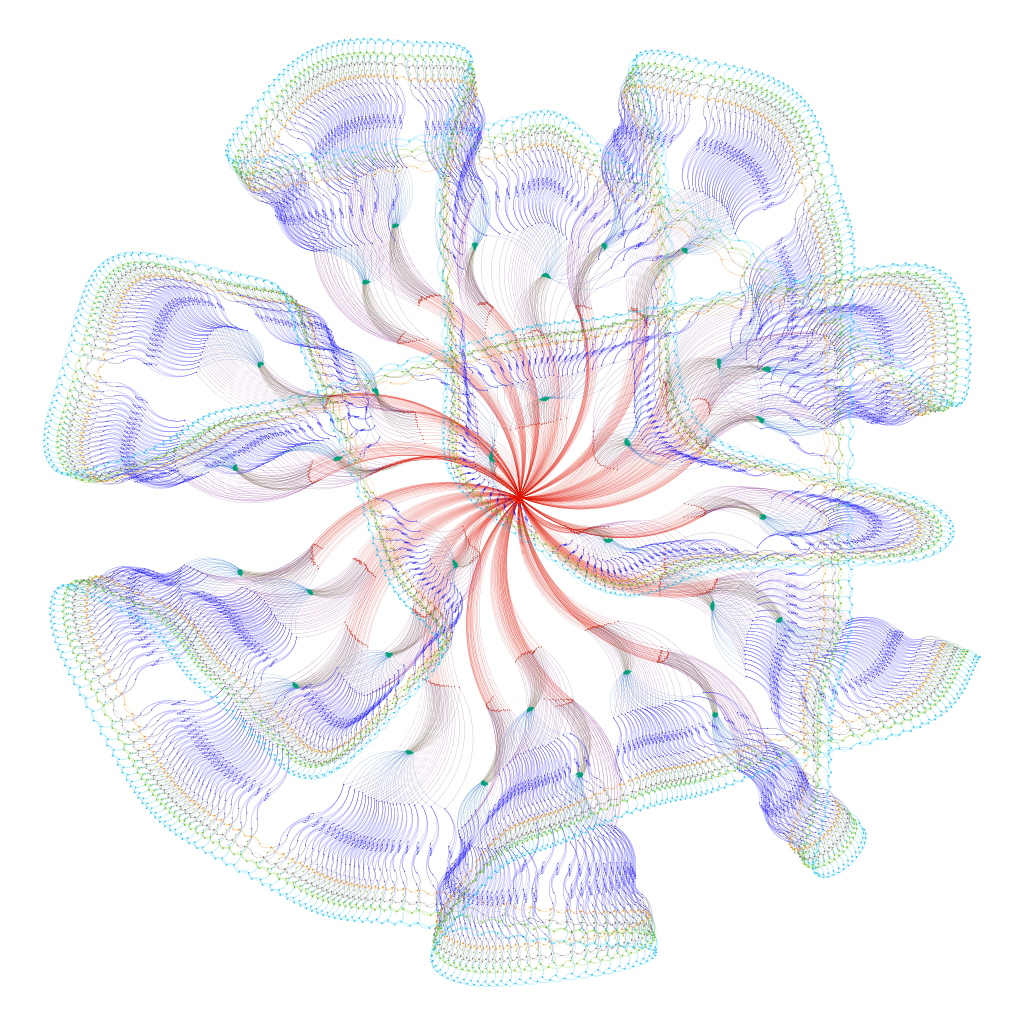
[Applied Energy 2023 source material and results]
Inverse-engineering workflows drive subsurface energy decision-making
For carbon sequestration to be successful, the location of CO2 injection pipes is key—for process optimization and to contain contaminant spreading. Traditional simulations for injection site exploration are prohibitively costly and do not match available field data, leaving the engineering team with an unresolved validation problem and unreliable design tools. Pasteur4D solves this dilemna out-of-the-box: fast physics-informed data-driven emulators, trained on simulations and fine-tuned with field data. Plus "batteries included" intelligent optimization techniques allow for cost-effective exploration and better performing outcomes:
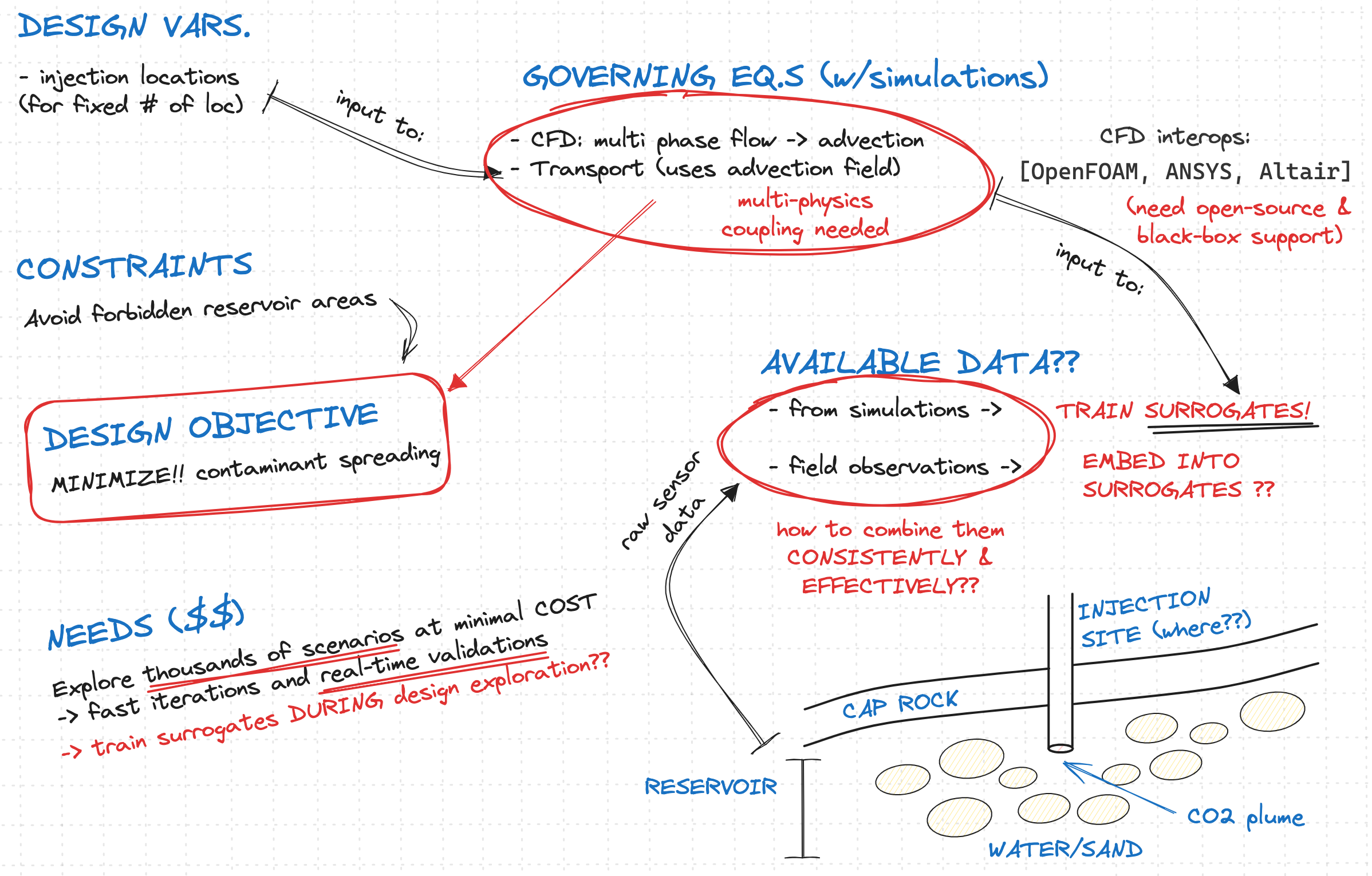
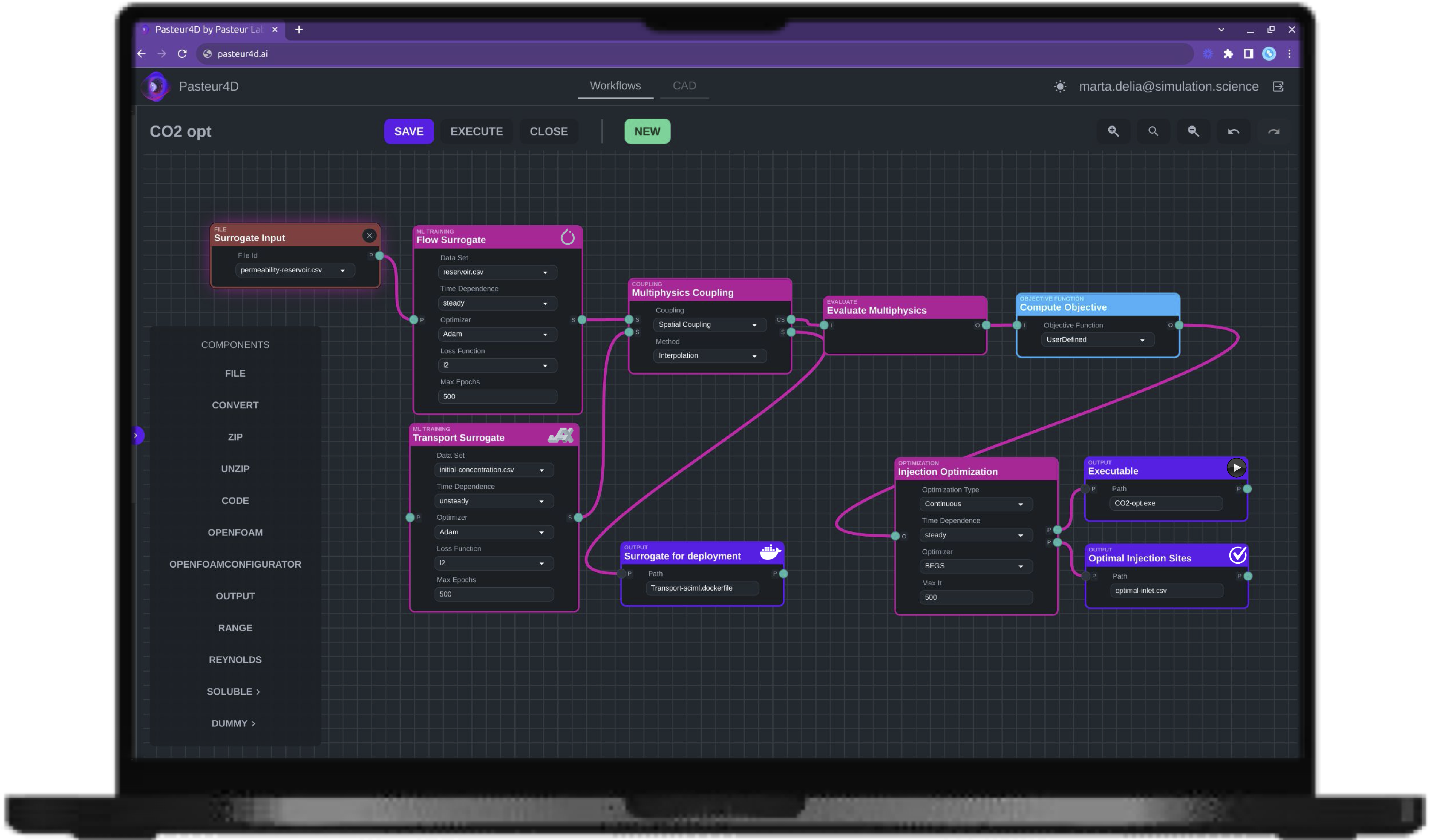
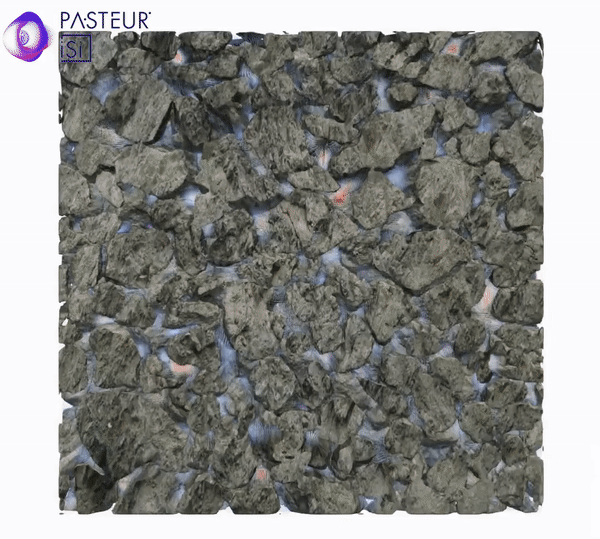
new, data-efficient ML-emulators run magnitudes faster.
In this CO2 geomechanics case study, an industry-standard CRS modeling codebase now runs 2 minutes locally with P4D, versus 22 hours on a supercomputer.
[NASA Digital Twin Earth case results]
Digital-physical AI
& system-of-systems
System-of-systems (or "SoS", where independent constituent systems collaborate to produce global behaviour that they cannot produce alone) modeling & simulation (M&S) is not possible for real-world engineering design nor iterative experimentation with existing tools. Most "digital twins" software today gives the illusion of digital-physical parity, running 3D-graphics engines that optimize for appearance of realism not real physics, producing incomplete models—errors which compound in SoS—that are inconsistent in basic physics and incompatible with the real, live systems they're meant to represent. Enter Pasteur4D...
Sub-surface thru near-space M&S bottlenecks unlocked for energy production systems
"Year over year we rely on Pasteur's platform.
With this tech, we decrease time to solution by 2 orders magnitude, and decrease energy consumption by 3 orders magnitude.
This has a drastic impact on the time it takes engineering to get done, has a big impact on design optimization and uncertainty quantification, and can enable high-fidelity, real-time digital twins."
P4D catalogue of use-cases and validations in Digital Twin Earth:
-
Climate tipping points:
→ Simulating hyper-local flooding effects for future climate scenarios —demo app @ Google Next;
→ "Aerosols geoengineering digital twins": how aerosols & emissions from extreme fires affect weather & climate–article;
→ Nuclear engineering & airborne contaminant spread micro-macro cause-effects simulations;
→ Accelerate USGS (& ESA) coastal climate simulators from 60 min to ~8 sec;
→ State-of-art wildfire simulation at the edge with ML-enhanced EO data; -
Earth resources & critical infrastructure:
→ Transforming stale & failing US power grids, ML-driven de-risking against downtimes and socio-economic inequalities—Texas case study;
→ OT-IT cybersec "spacetime AI" for water & waste treatment facilities;
→ Inverse engineering of concentrated solar power (CSP) systems for multiobjective water-resource & energy-storage optimization—summary, tech memo;
→ CO2 sequestration substrates for optimal injection vs seismic risk;
→ Precision site-selection for geothermal;
→ Precision site-selection & SoS optimizaztion of turbine configs for offshore wind;
→ Groundwater contamination predictive and counterfactual modeling (for local and cascading subterranean systems) —preprint;
Manufacturing driven by data and AI:
IP shifts from physical models to "digital threads"
Research indicates baseline use of digital threads will promptly yield 7-10% throughput improvement, 35-45% reduction in engineering hours/unit, 25-40% reduction in labor, and 15-20% improvement in asset efficiency across manufacturing and ICS.
"Now why can't I get anything like this out of Palantir? They don't think like you: Pasteur4D solves problems, known and especially unknown."
P4D-driven advantages for the "digital thread" era:
- Today— Continuous, differentiable 4D data pipelines spanning digital-to-physical boundaries (i.e., P4D software & machine data streams, propagating information to/from AM hardware components & sensors)
- Tomorrow— Vertically integrated data pipelines learn and share proprietary knowledge faster than real time: a P4D-enabled gold mine of up + downstream markets interoperating via end-to-end digital thread.
Preview
P4D's digital-physical inverse problem solving in AM:
(1) generates rich simulation datasets of varying CFD configs and downstream performance tradeoffs; (2) datasets build fast ML-surrogates that enable portfolio of 2000+ data points across design space (versus 6-12 previously); (3) then after user-given problem solved, P4D auto-identifies AM process inefficiencies as surface noise; (4) inverse-engineer from simulated data how to adaptively set AM settings to eliminate surface noise issues.
MS&A hierarchies evolved: data-driven full-fidelity intelligence, at the speed of need
Information-maximal M&S can only be realized with data-oriented computational tooling that seamlessly orchestrates users, data, M&S assets and knowledge continuously throughout existing hierarchies or networks of teams & orgs (i.e. human-machine system-of-systems)
"From a real-world security and intelligence perspective, just being able to run simulations like Pasteur4D—with many types of data at high speed—is key. No one else is doing this, not even close."
Value-adds for MS&A users, within and beyond P4D:
- Locally: Enables SoS by integrating spatial & temporal scales.
- Globally: Exported assets pack full-fidelity information, interoperable throughout MS&A hierarchies of SW and teams.
- P4D Research & Engineering users— What we've seen for all P4D case studies: AFRL research engineers, scientists, MBSE. How? Same as Ansys, Altair, et al. → You keep using CAE/CFD tools and bespoke code, and simply dump them to P4D.
- Analysts, Ops/Strategy Specialists, Operations Researchers— How? Plug-n-play MS&A software apps (containers) are auto produced, secured, shared, and maintained up-and-down the AFSIM hierarchy;
NatSec MS&A case notes:
- zero information loss— continuous info streams thru AFSIM "pyramid" layers, maximizing the MS&A potential information flows;
- Human-Machine Teaming (ref)— focus on intelligence right now, not after weeks of building & gluing simulations;
- Decisions Intelligence— AI-driven insights, integrating physical engineering models to SoS planning thru operations and back, enabling peak real-world performance & viability;
- lingua franca— nothing "lost in translation" across distinct groups of specialists and their data;
Contact us for datasheets and demos.
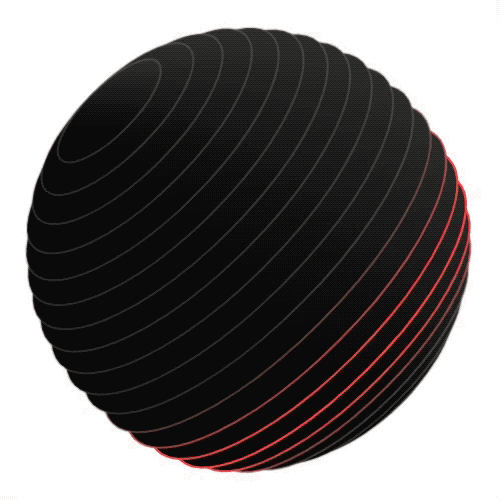
Trusted by world-leading experts:
the de-facto standard simulation platform for building and understanding our worlds
"The Pasteur4D platform you're building is going to reshape all of engineering, like deep learning for drug discovery the last 7 years."
—Dr. Jacomo Corbo, Chief Scientist @ McKinsey AI, Renault Racing
"The platform would effectively shortcircuit prototyping: you learn more in-silico than you ever would from the fullscale build."
—undisclosed Dep Chief Scientist @ US National Security
"Pasteur Labs is paving the way toward something amazing… their Simulation Intelligence Operating System will be a game changer for machine intelligence."
—Dr. Justin Gottschlich, Director @ Intel Labs
"Pasteur gets it — a digital twin may be $1M to build, but return $1B for the customer over the next decade running it."
—Dr. Danny Lange, SVP AI @ Unity
"Simulation Intelligence and these inverse design solutions, is the future for materials and energy."
—Prof. Olexandr Isayev, Dir. Quantum Chemistry Lab @ Carnegie Mellon








